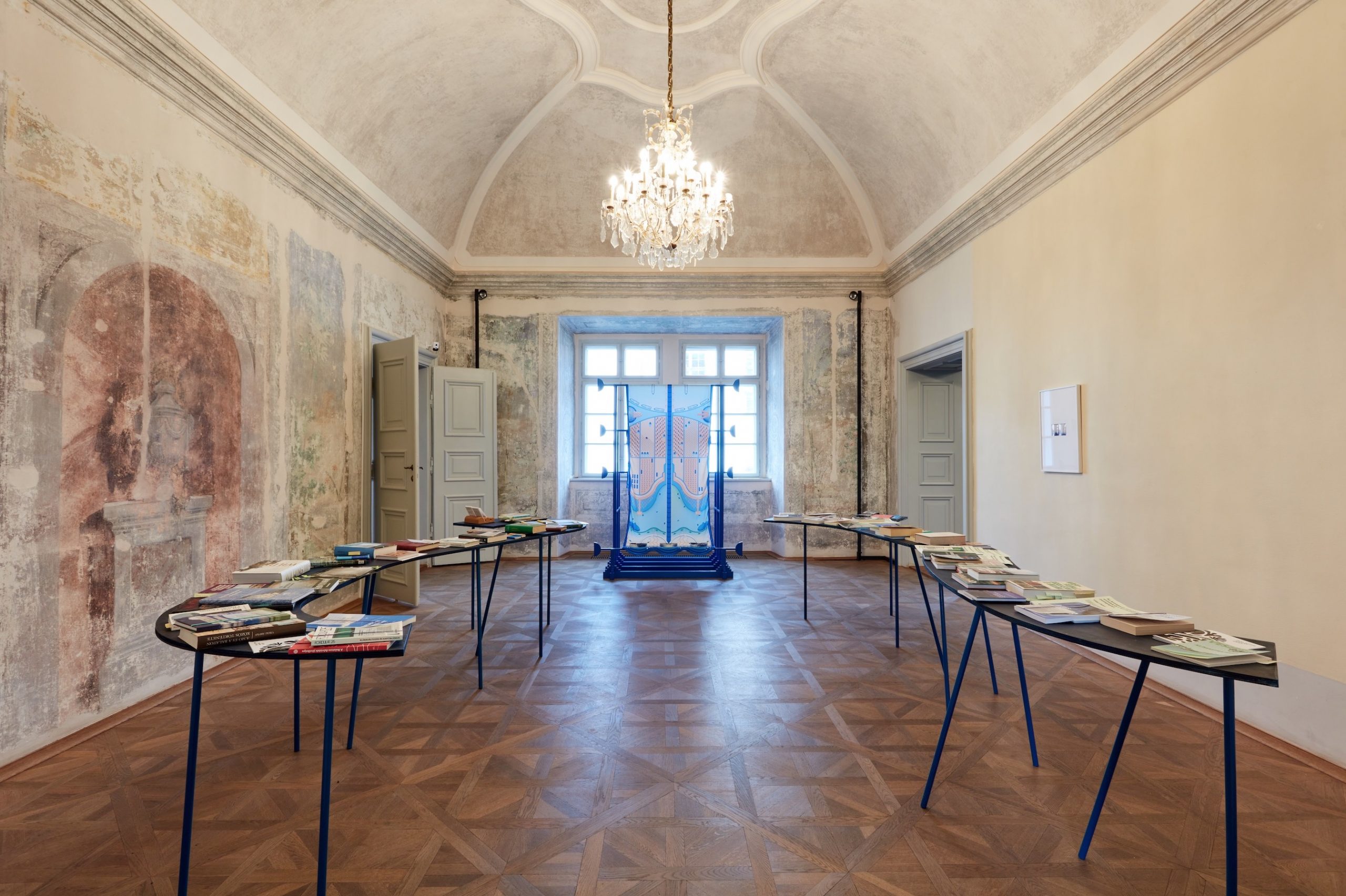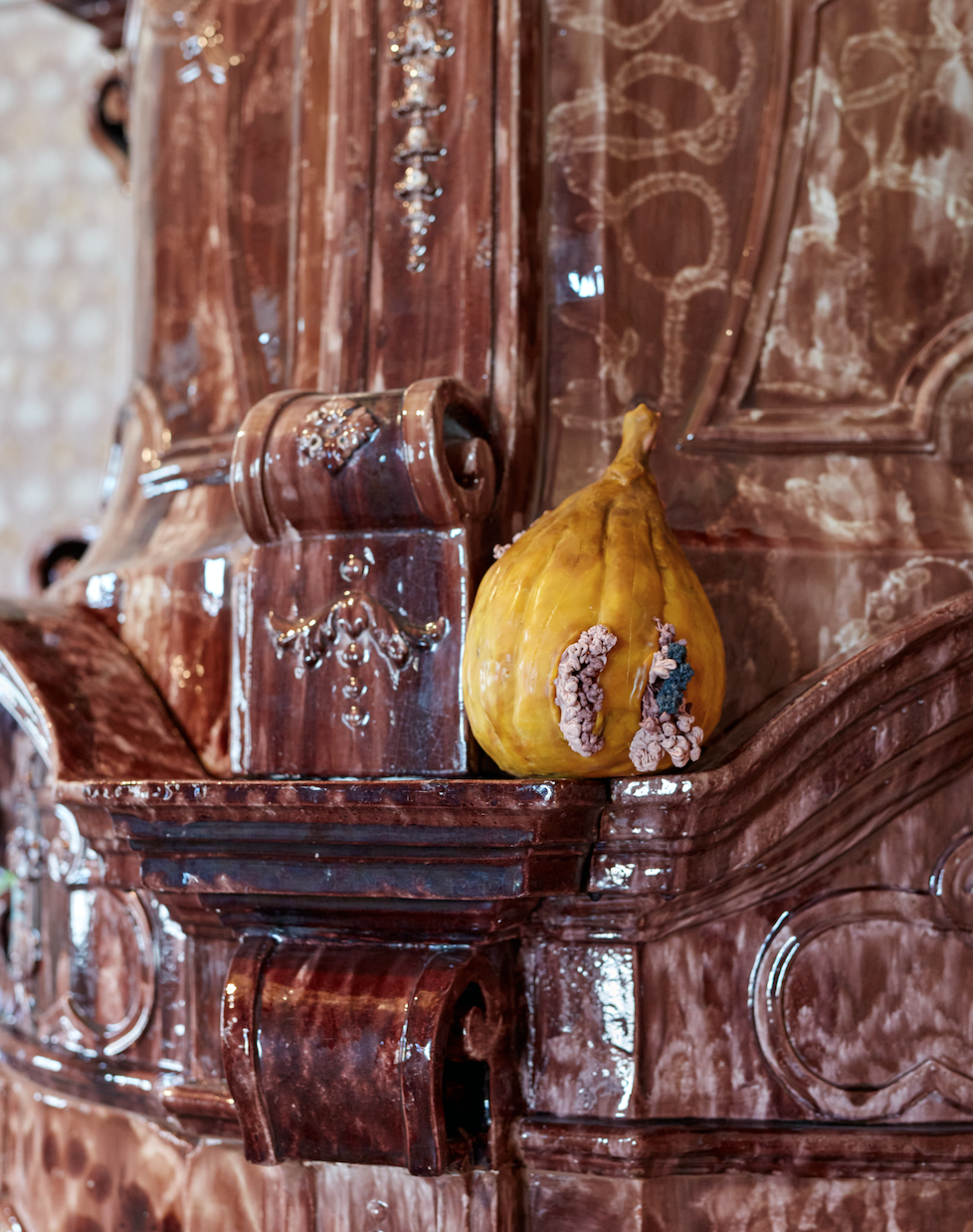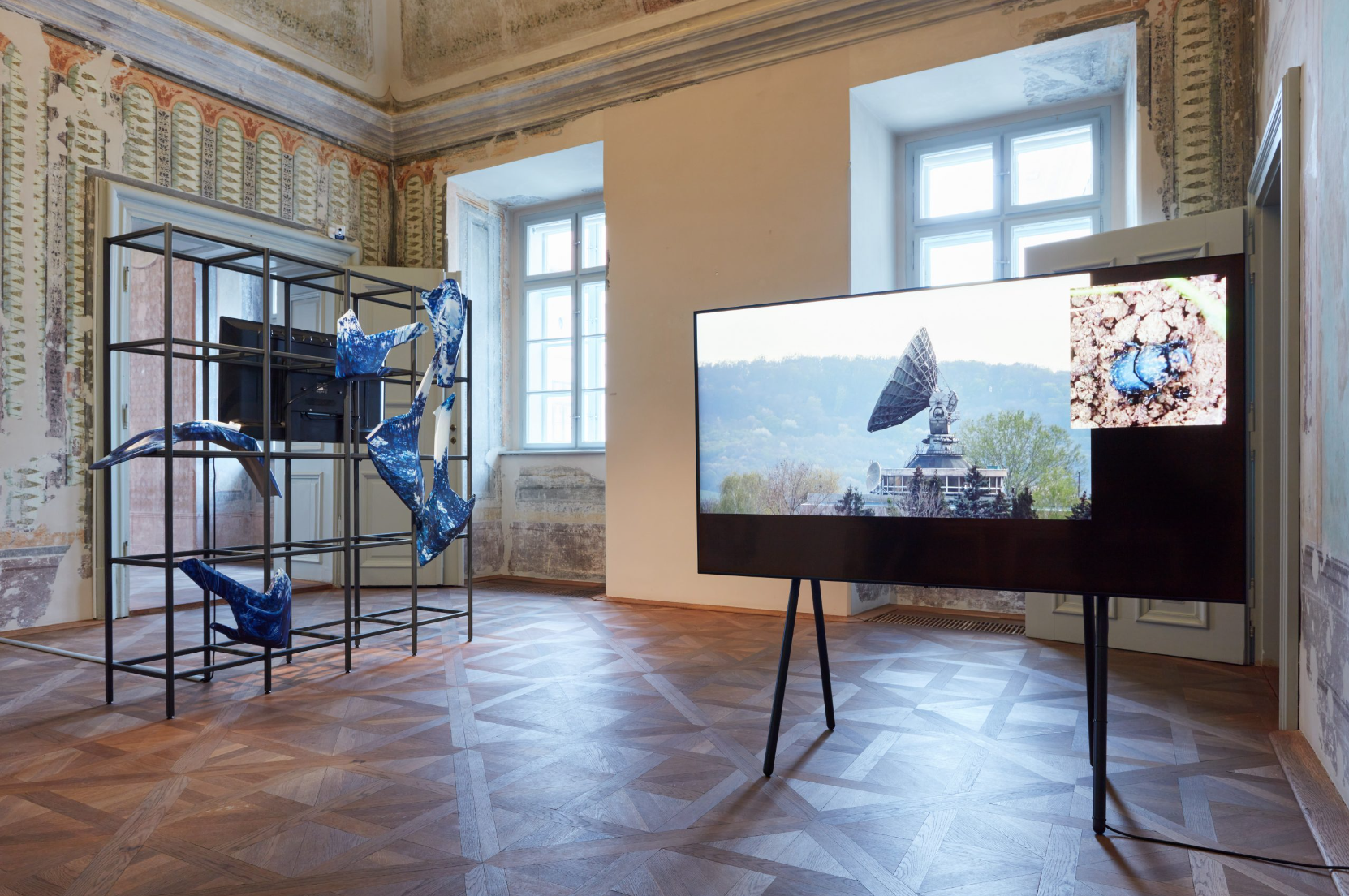
BALATORIUM
Disturbed Waters
Exhibition: 20 October 2023 – 28 January 2024
Dubniczay Palace, House of Arts Veszprém, Hungary
Ana Brotas X Balázs Budai & Balázs Virág X Collectif Trouble (Jeanne Astrup-Chauvaux & Garance Maurer & Mathilde Dewavrin) X Calla Bettina Ernst X Kitti Gosztola & Bence György Pálinkás X Fuzzy Earth (Tekla Gedeon & Sebastian Gschanes) X Gideon Horváth X Hajnal Gyeviki X Harun Morrison X Marie Ouazzani & Nicolas Carrier X Rita Süveges X szabadonbalaton (Diána Berecz & Dániel Bozzai & Éva Bubla & Bence Fülöp & András Zlinszky and collaborators Gergely Ofner X GUBAHAMORI X Mária Schuller & Borbála Vértesi X Anna Tüdős X Anna Varga) X The New Liquidity (Selma Boskailo & Anders Ehlin) X Áron Tóth-Heyn X Ádám Ulbert X Anna Zilahi
– curator Borbála Soós
This exhibition aims to reflect on the relationship between culture and ecology of Lake Balaton and the Balaton Uplands region, more specifically, the research and conversations developed as part of the BALATORIUM project developed with the professional and operational leadership of PAD Foundation in 2022 and 2023, and commissioned by Veszprém-Balaton 2023 European Capital of Culture.
“Disturbed Waters” serves as a new stage in the development of the BALATORIUM projects. Rather than a static collection of the outcomes, it reveals the collaborative process and conversations behind the projects in order to open up and deepen the dialogue with the wider public. Among the collaborations, it is particularly important that the artists have developed a close relationship with researchers working in the region, including the Tihany-based Balaton Limnological Research Institute, the Department of Limnology at the University of Pannonia in Veszprém, and the a Balaton-felvidéki National Park.
The exhibition showcases a wide variety of artworks, including projects by szabadonbalaton (freebalaton) such as the Algae Bar, artworks developed as part of two Artist Residency Programmes and in collaboration with scientists, workshops produced during two Ecological-Cultural Weeks, a series of SLOWWALKS as performative landscape tours, and publications collected in the constantly growing Beach Library. Also featured are projects developed by students of Moholy-Nagy University of Art and Design (MOME), interactive public interventions, newly invited Hungarian and international artists’projects, as well as an outdoor installation for the inner courtyard of the Dubniczay Palace covered with reed harvested from Lake Balaton.
RESEARCH STRANDS
Nature and culture are intimately intertwined as they mutually influence, produce and reproduce one another. Hence by being more aware of our impact and by changing our approach, including our cultural habits, we can positively influence nature too. To help unfold this idea, the exhibition highlights three strands within the ongoing research of the artists, scientists and other BALATORIUM collaborators.
Discussions around bodies of water dives into how water connects various places and bodies, including those of plants, animals and humans. Water gushes, trickles and seeps through landscapes, bodies and cells at various speeds, and hence connects us both on the molecular, regional and global levels. Paying attention to this embodied circulatory system helps us understand that we are all intimately connected. As water flows through us, it connects us across differences. It connects us through time and space to other bodies in the past, present and future.
We have to acknowledge that there is an unprecedented speed of ecological changes unfolding in the Balaton region, which is one of the major research concerns of the scientists and artists involved in the project. These include problematics such as climate change, invasiveness, and the increasing stresses placed on the ecosystem. Hence the second strand within the exhibition questions how we might imagine our future landscapes and what stories we choose to tell about them? In whose fantasies are we going to live in? This topic includes concrete ecological, political and social concerns, such as thinking about the often contradictory interests and desires of different human and non-human users of the lake. Who can access the lake, and under what conditions? Who is and is not welcome here? Who is useful and who is not? The BALATORIUM project involved a wide variety of people and groups, such as local residents, holiday home owners, seasonal tourists, investors, local mayors, sailors, shephards, scientists, artists, students etc. whom each have different relationships with the lake, as well as different connections, interests and perspectives related to its future.
The third and final strand within the exhibition addresses the SLOWWALK, and noticing the scale of the tiny. It considers how to build and maintain a personal relationship with a specific location. The SLOWALK series was initiated by the szabadonbalaton team. Within the exhibition, going beyond representing the series, the slow walk becomes both a subject and a modality of exchange with a place. Ways of seeing, hearing and noticing with each of our senses, is an important feature of the exhibition, including how one feels in the space and how visitors engage with the materials.
Visitors are encouraged to pick up cards and books, to make frottages of various lands surrounding water bodies, and to smell, taste and listen to different elements within the exhibition. Using various senses, or if you like methodologies, also ties in with how scientists might use different sensing tools to investigate specific aspects of a site.
“Disturbed Waters” offers different levels of engagement to the visitors, and reveals a complex and troubled ecosystem. The exhibition and related events help to tease out how different cultural practices have become part of the ecology of this region, and how structures of society and nature are reflected in one another.
EVENTS
A series of workshops, roundtable discussions, slow walks and screenings activated the exhibition both on and off-site.
PUBLICATION
Download the pdf of the English and Hungarian bilingual Disturbed Waters publication here.
VIDEO

















































